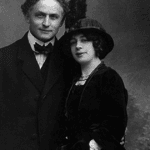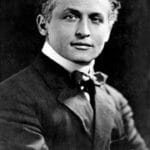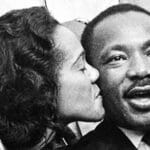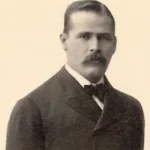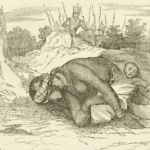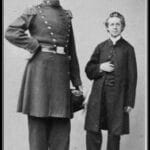Hey there, get ready for a mind-blowing trip as we peek behind the curtain and meet the real guy behind the legendary Harry Houdini. From his humble Budapest roots to becoming the king of escapes, we’ll dive deep into the fascinating life of Ehrich Weisz, the man who made the Houdini name unforgettable. We’ll uncover his secrets, explore his incredible story through old records, and paint a vivid picture of the man who left us all in awe. So, buckle up and let’s journey into the captivating world of Ehrich Weisz: The Man Who Became Houdini.
From Humble Beginnings to Global Icon
Before the world marveled at the legendary Harry Houdini, there was a young boy named Ehrich Weisz, born in Budapest back in 1874. His family, like many others seeking a new life, journeyed to America, eventually settling in Wisconsin. It was there that Ehrich, still just a kid, got his start in show business as a trapeze artist – talk about starting young!
But Ehrich was destined for something even more thrilling. He was captivated by the world of magic, particularly the daring feats of famous magicians. Inspired, he chose the stage name Harry Houdini and so began his incredible journey to becoming a global icon.
Houdini’s name quickly became synonymous with escaping the impossible. Audiences were on the edge of their seats as he broke free from handcuffs, straitjackets, and even sealed chambers. His underwater escapes? Now those were truly nail-biting, pushing him to the absolute limits of what humans could endure – there were even a few close calls that could have ended in tragedy. What set Houdini apart was his relentless drive and his talent for developing new and innovative escape techniques.
But Ehrich Weisz was more than just an illusionist – he was a man of curiosity and reason. He became an outspoken skeptic of the spiritualism that was sweeping the nation, dedicating himself to exposing fraudulent mediums and debunking supernatural claims. This earned him the respect of scientists and skeptics alike. For Houdini, the pursuit of truth extended far beyond the stage.
Houdini’s impact on the world of magic is undeniable. His daring escapes revolutionized the art of illusion and continue to inspire magicians even today. His unwavering commitment to ethical practices helped shape the very foundation of the Society of American Magicians.
Despite his very public life, a certain mystery still surrounds Ehrich Weisz. From his untimely death in 1926 to the countless theories surrounding his secrets, Houdini’s legacy continues to fascinate and inspire. His name remains forever linked with escape, illusion, and the relentless pursuit of the unknown.
Houdini’s Death: Unlocking the Truth Behind the Legend
We know Houdini was a tough guy, famous for his incredible escapes. But even the strongest people can be struck down by unexpected health problems. While a punch to the stomach is often linked to Houdini’s death, the truth is far more complex, involving a delayed surgery for a ruptured appendix and the medical realities of 1926.
The Incident
- Date: October 22, 1926
- Location: Houdini’s dressing room at the Princess Theatre in Montreal
- Involved Parties:
- Harry Houdini: World-renowned escape artist
- J. Gordon Whitehead: A McGill University student
Whitehead, a boxing enthusiast, approached Houdini and asked if he could withstand punches to the abdomen, a claim Houdini often made. Houdini, reportedly caught off guard and not properly braced, was struck multiple times by Whitehead.
Houdini’s Deterioration and Death
It’s likely that the punches Houdini received played a role in his appendix rupturing, but they weren’t the sole cause of his death. The real tragedy was the misdiagnosis and the delayed surgery.
- Initial Symptoms: Houdini performed after the incident but complained of pain and later developed a fever.
- Misdiagnosis: Doctors initially believed that Houdini had a stomach ailment or the flu.
- Ruptured Appendix: Houdini was eventually diagnosed with a ruptured appendix and acute appendicitis.
- Surgery: An appendectomy was performed on October 25th, but it was delayed due to the initial misdiagnosis.
- Peritonitis: The ruptured appendix led to peritonitis, a serious inflammation of the abdominal lining.
- Deterioration: Houdini’s condition worsened despite the surgery.
- Date of Death: October 31, 1926 (Halloween)
- Place of Death: Detroit, Michigan
- Official Cause of Death: Peritonitis, a complication arising from the ruptured appendix.
Houdini’s death, while shrouded in the mystery befitting his career, was ultimately a medical case that highlights the importance of prompt and accurate healthcare.
The Mystery Behind Houdini’s Name: More Than Meets the Eye
You know, it’s funny how a simple name change can completely transform someone’s career. Take Ehrich Weisz, for example – probably doesn’t ring a bell, right? But mention “Harry Houdini,” and bam! Instantly, you’re picturing daring escapes, incredible illusions, and a touch of the mysterious. So, how did Ehrich, a young magician from Budapest, Hungary, become the legendary Houdini?
Inspired by an Idol
It all started with a healthy dose of admiration for a fellow magician. See, Ehrich was a huge fan of Jean Eugène Robert-Houdin, a French magician famous for his sophisticated illusions. The name “Houdin” just seemed to have a certain magical charm to it. And wanting to put his own spin on it, Ehrich added an “i” to the end, thinking it meant “like” in French – a little mix-up that ended up working out pretty well, don’t you think?
Some experts believe that the “Harry” in his name was a tribute to the American magician, Harry Kellar, though this has been debated over the years. What is interesting is that “Ehrie” was a common nickname for “Ehrich,” suggesting a deeper connection to his chosen stage name than previously acknowledged.
Crafting a Legend
But the name change was just the tip of the iceberg. As Houdini’s fame grew, he knew how to play up the mystique. He’d drop hints about being part Native American, maybe even having a bit of aristocratic blood in him. Was it all true? Who knows! That was part of the magic, the carefully constructed persona that captivated audiences everywhere. He wasn’t just performing tricks; he was creating a legend.
Beyond Handcuffs: The Real Reason Houdini Ran Away
We’ve all heard of Harry Houdini, the legendary escape artist who could wriggle free from even the most inescapable traps. But before the bright lights and standing ovations, he was just Ehrich Weisz, a young boy growing up in Appleton, Wisconsin. At the age of nine, Ehrich took a giant leap, leaving his family and the only life he’d ever known to face the open road. What could make a kid so young make such a big decision?
Escaping Poverty
Life wasn’t easy for the Weisz family. Money was tight, and jobs were hard to come by for Ehrich’s father. Sometimes, making ends meet felt impossible. Imagine the allure of the circus rolling into town promising excitement and a steady paycheck. For Ehrich, it might have felt like a lifeline.
Troubles at Home?
While details about what went on inside the Weisz home are a bit of a mystery, some historians believe things weren’t always peaceful. Whispers of a difficult relationship with his father suggest that home life might have been another factor pushing Ehrich toward a different future.
Yearning for Adventure
Let’s not forget, though, that Ehrich was drawn to adventure. The circus, with its dazzling spectacle and daring feats, probably felt like another world compared to his everyday life. It represented freedom, excitement, and a chance to create his own destiny.
Piecing Together the Puzzle
While we might never know the exact reasons why Houdini ran away, these possibilities paint a picture of a young boy desperate for a different life. His escape from poverty, a potentially challenging home life, and the desire for adventure ultimately led him to become the legendary Harry Houdini.
Houdini’s Heir Apparent: The Truth About His Children and Legacy
While we all know about Harry Houdini’s incredible escapes and jaw-dropping magic, a question that often pops up is whether he had any kids. It’s intriguing how even with someone so famous, parts of their life remain a mystery. And the answer to this question is no, Harry and his wife Bess didn’t have any children.
A Life on the Road
Now, why they didn’t have children is something we don’t have a clear answer to. Some folks believe it was a choice they made. Think about it, Houdini’s life was full of risky stunts and constant travel, maybe they felt that wouldn’t be the best environment to raise kids.
Lingering Questions
Then again, others speculate that maybe health problems, or perhaps personal reasons we may never know, prevented them from having children. It’s like a puzzle with missing pieces!
A Legacy Lives On
What we do know is that even without children, Houdini’s impact on the world of magic is undeniable. He left his props and magical effects to his brother, Theo Hardeen, upon his death. His legacy continues to inspire awe and wonder, proving that some legends are strong enough to last, even without a family line to carry them forward.
- Crypto Quotes’ Red Flags: Avoid Costly Mistakes - June 30, 2025
- Unlock Inspirational Crypto Quotes: Future Predictions - June 30, 2025
- Famous Bitcoin Quotes: A Deep Dive into Crypto’s History - June 30, 2025

